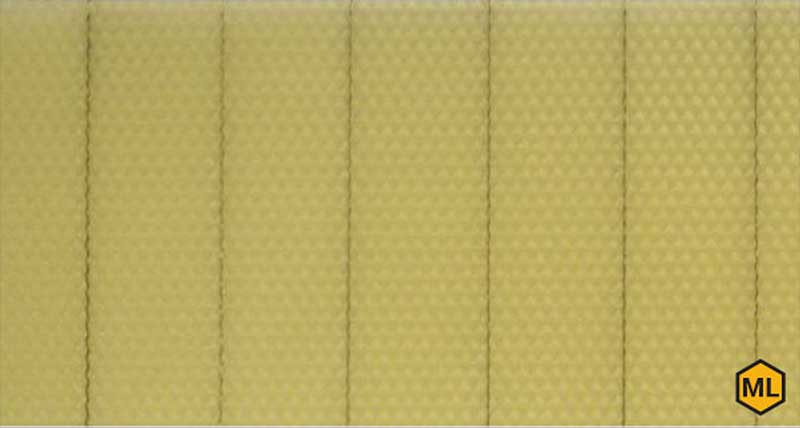Featured Video
The Role of Bee Foundation
Start with a strong foundation! Find out why beekeepers and bees prefer beeswax foundation products by Mann Lake. Sheets of beeswax foundation or plastic foundation embossed with a honeycomb pattern are placed in each frame to serve as a base for the bees to make honeycomb. We recommend using our best-selling waxed Rite-Cell foundation, available in our store.
Before you choose a bee frame foundation, it’s important to understand what this product does and how it can benefit your beehive. As a beekeeper, fostering a safe, happy place is the most important step in honey creation. This post will lay the foundation (no pun intended!) for how you can set up your brood for success as the bees build their comb.
What is Bee Foundation?
Simply put, the foundation is made from either pressed wax, plastic, or both. They’re created in a hexagonal shape and installed within the frames for your bees to build on. Beeswax foundation is a popular choice for many beekeepers because it provides natural, high-quality support for comb building.
Most people use plastic or wood frames. Wood frames are a more natural option, while plastic frames have beneficial properties that make them desirable for beekeepers. Research shows that plastic frames won’t rot and have the foundation already inserted in the frame.
The plastic foundation typically comes with a layer of beeswax foundation to encourage the bees to start creating their honeycomb. Wax foundations are the more natural option in this regard, but in our experience, honey bees have no issue starting their work on either one of these options.
Benefits of Using Plastic or Beeswax Foundation
Some beekeepers prefer to let their honey bees build their comb naturally without any interference or support. However, using a structured foundation offers several advantages:
- Stronger comb – Foundation-based comb is sturdier and can support large amounts of honey and brood.
- Guided template – It provides a structured cell base that ensures bees build their comb efficiently.
- Easier honey extraction – Built-in foundation supports comb stability, making extracted honey collection more manageable.
For many, using beeswax foundation ensures a more controlled, durable, and efficient beekeeping experience.
Do you Need Bee Foundation?
Every beekeeper is different; some opt to let the bees do their work the way nature intended, without interference from anyone or anything, including foundations and frames.
Going foundationless means you won’t install any - you guessed it - foundations, so the hive can build its comb any way they like. This allows the brood to choose the cell size they want for their honeycomb, rather than following the size and shape of the templated foundations.
Research shows that plastic foundations layered in beeswax foundation coming from larger commercial bee operations often contain pesticides and other chemicals that can be harmful to each bee, particularly early on in the process. This is one reason some believe that installing only frames is the best choice.
It’s important to remember that beekeeping is a personal experience; you learn as you go. You’ll make mistakes and learn from your experiences, so be open to the possibility of changing your strategy as time passes, and you gain knowledge from your own resources.
What is the Best Foundation for Bees?
Traditional foundation is made from beeswax foundation, but plastic foundation is becoming popular among beekeepers of all skill levels.
We recommend using our best-selling waxed Rite-Cell foundation. This type of foundation is plastic and has a deeper acceptance rate than other brands. It is easily inserted into an assembled frame and offers defined, structured cells for honey production.
Once the honey is extracted, the plastic foundation is easy to re-install and use repeatedly, making it a cost-effective and more sustainable choice for beekeeping. You can find these products in our store, where we provide essential tools for every beekeeper.


